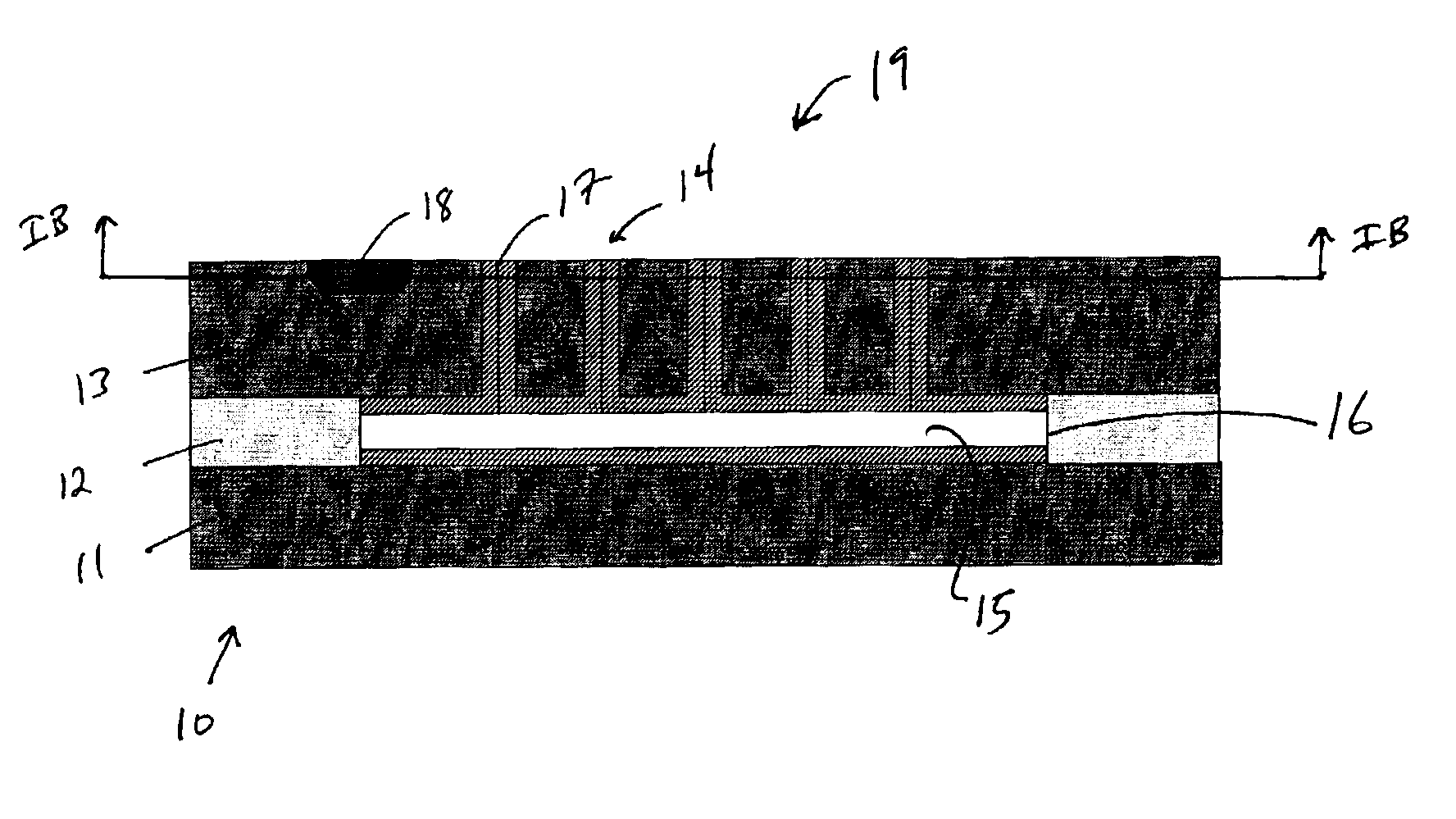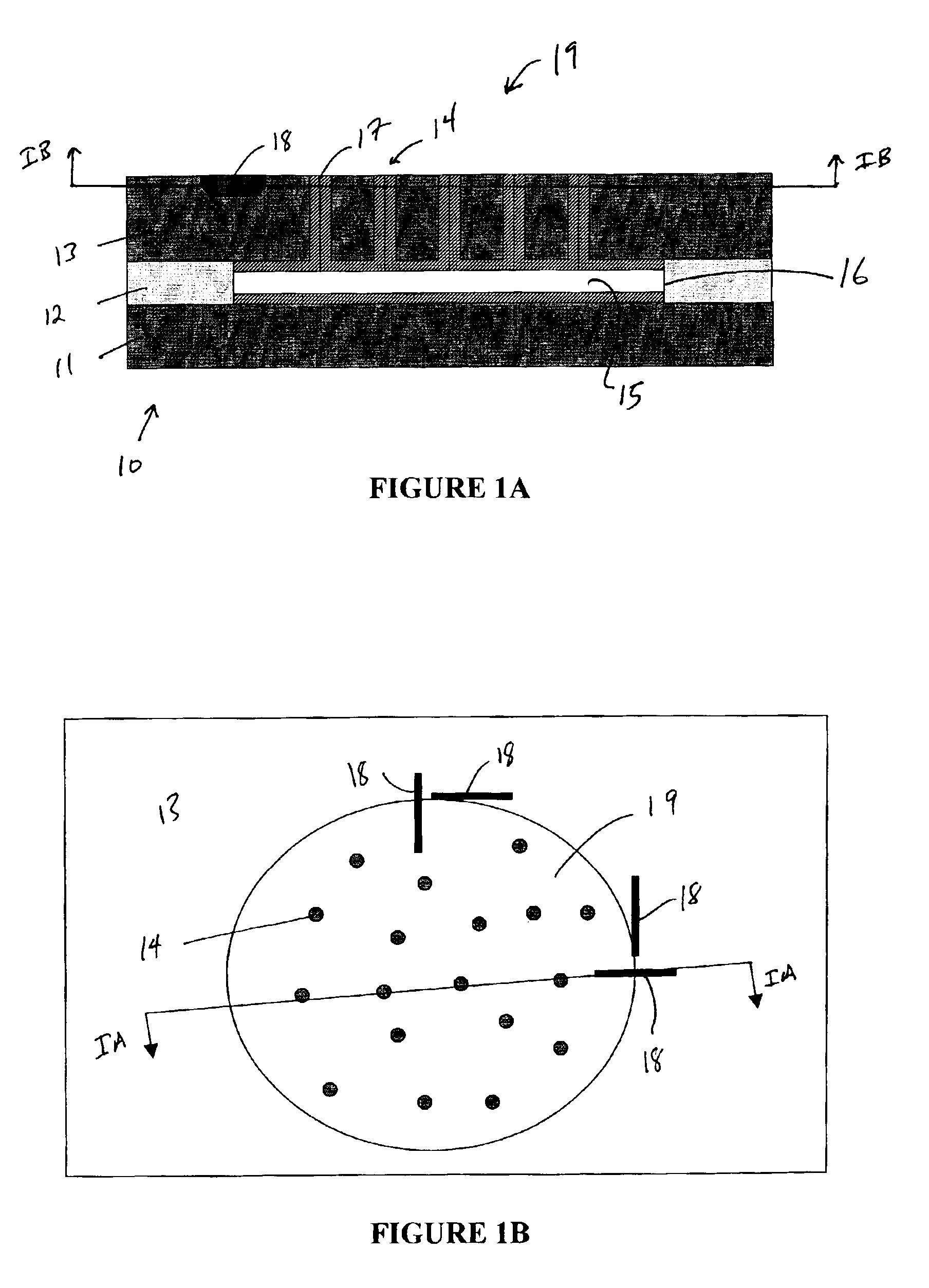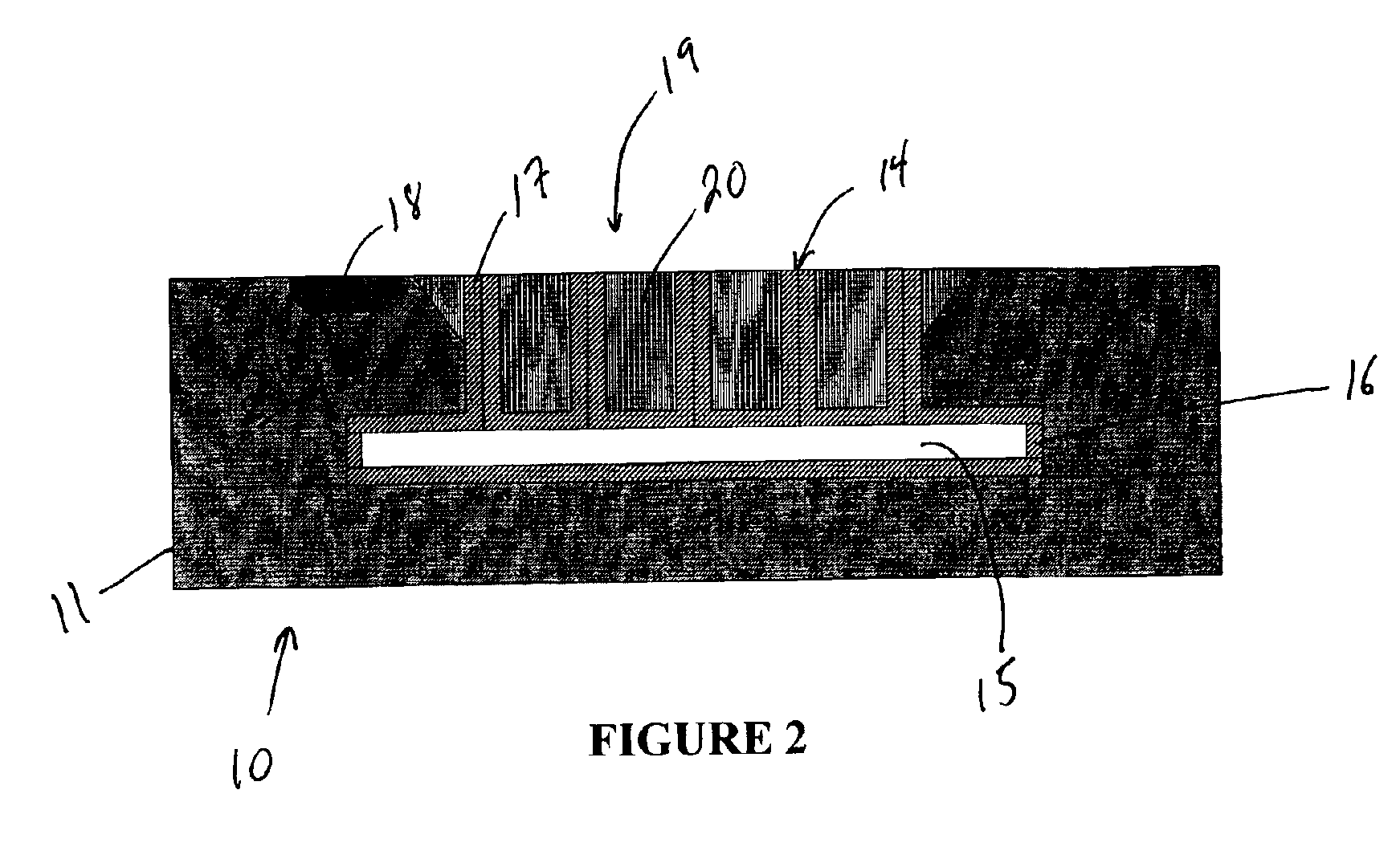Episeal pressure sensor and method for making an episeal pressure sensor
a pressure sensor and episeal technology, applied in the field of episeal technology, can solve the problems of large die area, large die area, and large die area, and achieve the effects of accurate pressure sensor, reduced cost of pressure sensor production, and good control
- Summary
- Abstract
- Description
- Claims
- Application Information
AI Technical Summary
Benefits of technology
Problems solved by technology
Method used
Image
Examples
Embodiment Construction
[0023]In an exemplary embodiment of the present invention, pressure sensor device structures are built with episeal technology. Episeal as used herein means sealing using an epitaxial reactor. An epitaxial reactor is used to deposit silicon epitaxially. Epitaxially deposited silicon follows the form of the silicon on which it is deposited, and may be either monocrystalline silicon or polycrystalline silicon. Epipoly is used herein to refer to epitaxially deposited polycycrystalline. Applications include both low cost and high accuracy pressure sensors. Sensing with both piezoresistive and capacitive techniques may be supported by the present invention. The pressure sensor according to an exemplary embodiment of the present invention may be built in at least two ways, either by growing epitaxial silicon or by using a bonded wafer, for instance an SOI (Silicon on Insulator) wafer. The proposed method may control the thickness by the epitaxial deposition parameters, or by bonding and g...
PUM
| Property | Measurement | Unit |
|---|---|---|
| distance | aaaaa | aaaaa |
| thick | aaaaa | aaaaa |
| thick | aaaaa | aaaaa |
Abstract
Description
Claims
Application Information
 Login to View More
Login to View More - R&D
- Intellectual Property
- Life Sciences
- Materials
- Tech Scout
- Unparalleled Data Quality
- Higher Quality Content
- 60% Fewer Hallucinations
Browse by: Latest US Patents, China's latest patents, Technical Efficacy Thesaurus, Application Domain, Technology Topic, Popular Technical Reports.
© 2025 PatSnap. All rights reserved.Legal|Privacy policy|Modern Slavery Act Transparency Statement|Sitemap|About US| Contact US: help@patsnap.com



